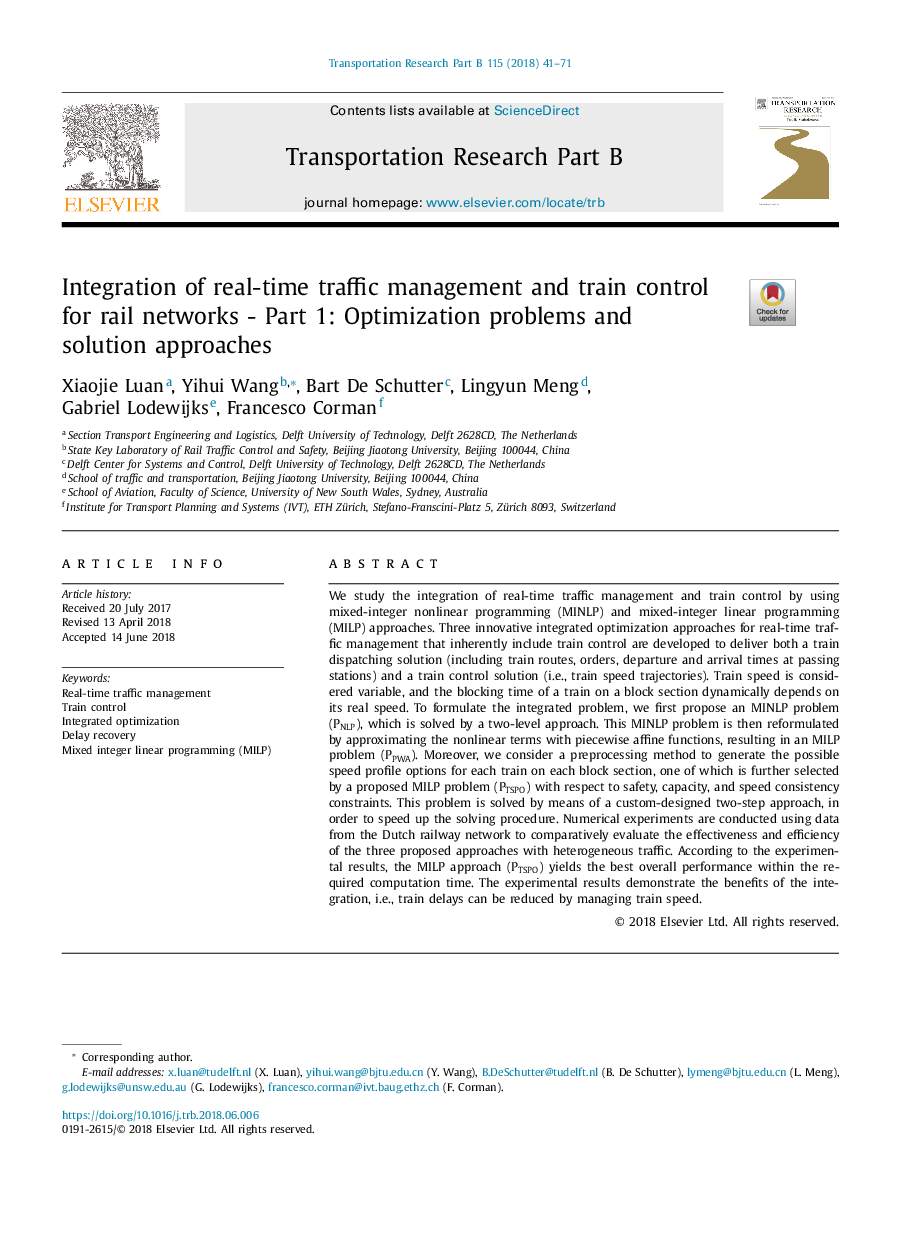| Article ID | Journal | Published Year | Pages | File Type |
|---|---|---|---|---|
| 7538876 | Transportation Research Part B: Methodological | 2018 | 31 Pages |
Abstract
We study the integration of real-time traffic management and train control by using mixed-integer nonlinear programming (MINLP) and mixed-integer linear programming (MILP) approaches. Three innovative integrated optimization approaches for real-time traffic management that inherently include train control are developed to deliver both a train dispatching solution (including train routes, orders, departure and arrival times at passing stations) and a train control solution (i.e., train speed trajectories). Train speed is considered variable, and the blocking time of a train on a block section dynamically depends on its real speed. To formulate the integrated problem, we first propose an MINLP problem (PNLP), which is solved by a two-level approach. This MINLP problem is then reformulated by approximating the nonlinear terms with piecewise affine functions, resulting in an MILP problem (PPWA). Moreover, we consider a preprocessing method to generate the possible speed profile options for each train on each block section, one of which is further selected by a proposed MILP problem (PTSPO) with respect to safety, capacity, and speed consistency constraints. This problem is solved by means of a custom-designed two-step approach, in order to speed up the solving procedure. Numerical experiments are conducted using data from the Dutch railway network to comparatively evaluate the effectiveness and efficiency of the three proposed approaches with heterogeneous traffic. According to the experimental results, the MILP approach (PTSPO) yields the best overall performance within the required computation time. The experimental results demonstrate the benefits of the integration, i.e., train delays can be reduced by managing train speed.
Related Topics
Social Sciences and Humanities
Decision Sciences
Management Science and Operations Research
Authors
Xiaojie Luan, Yihui Wang, Bart De Schutter, Lingyun Meng, Gabriel Lodewijks, Francesco Corman,
